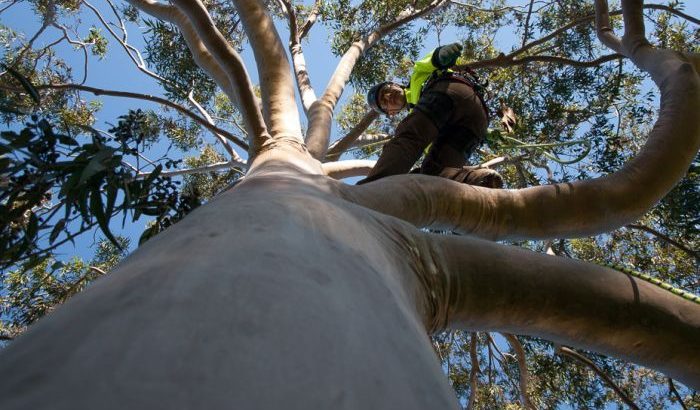Australia’s fastest tree climbers race to Adelaide for National Tree Climbing Championships
The racers will compete in five qualifying events on Saturday, with the finalists progressing to the Master’s Challenge final on Sunday.
The sport began in the 1970s in America, with this year marking the 18th time the event has been held in Australia.
It’s a huge adrenalin rush competing up a tree.
National Tree Climbing Championship judge Michael Palamountain
Although the games revolve around a person scaling a tree and performing various tasks, consulting arborist and games judge Michael Palamountain said the aiding technology used in the sport is evolving rapidly.
“We have a lot of mechanical equipment, mechanical ascenders and descenders, and innovation in the style of climbing,” Mr Palamountain said.
Competing at a state level from 1999 and a national event in 2001, Mr Palamountain said the sport is spectacular for competitors and onlookers alike.
“It’s a huge adrenalin rush competing up a tree,” he said.
With an expectation to complete the competition tasks with precision, speed and safety, Mr Palamountain said the pressure was intense for competitors.
“It’s a fantastic atmosphere,” he said.
More than just swinging in trees
The Australian Tree Climbing Championships consist of five preliminary rounds the competitors must complete to qualify for the finals.
The first round, a work climb, has the competitor placed on a working platform within the canopy.
They must then locate and ring several bells placed within the tree, with points allocated for speed, technique and safety.
In the second round competitors must complete an aerial rescue of a weighted dummy, placed in a tree, that is suffering from a simulated ailment.
The third round relies on a climber’s speed and accuracy as they attempt to hit several targets placed within the canopy with their weight and throw line.
Speed also counts heavily for the fourth round, where they must rope-climb-ascend as fast as they can and ring a bell secured at the top of a tree.
The final qualification round sees the competitor climb a tree using a “secured foot-lock” technique, where they must use a free-hanging rope to climb the tree and only use their hands and legs to advance.
The top qualifiers progress to the Master’s Challenge, which is a combination of several tasks that need to be completed within a 20-minute time window.
The winner of Master’s Challenge is crowned the Australian champion and qualifies to compete in the International Tree Climbing Championships.
“That’s a very big event, with competitors from Europe, New Zealand, Asia and America all competing for the world champion title,” Mr Palamountain said.
Mr Palamountain said the Americans lead the earlier international championships, in the 1990s German climbers emerged as the leaders and recently New Zealand has provided world champion winners.
Heats for the National Tree Climbing Championships will be held at Pinky Flat, War Memorial Drive, Adelaide on Saturday May 30, 2015, with the Master’s Final on Sunday.
